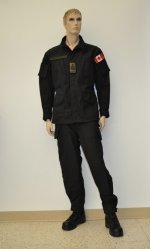- Reaction score
- 2
- Points
- 230
We will just have to agree to disagree on this topic. I agree that smoke and inhalation injury in confined spaces are a complicating injury. However, every member of the ship's company also needs to be carrying a tourniquet.Underway said:Burn, falling/impact injuries, and inhalation injuries (ie smoke). Problem with Afghanistan combat is that the mechanism of injury was very different so the casualty care needs to be different. Also hypothermia, hyperthermia are problems with the army as well, guys were getting hypothermia in the middle of the dessert because of the temp differential at night.
Not sure how handy quick clot is in burn injuries, seeing that it cooks the flesh when its working. Also quick clot and israeli bandages do not mix well with water. At all. Maybe a need for a few tourniquets onboard but losing a leg is not a very likely injury, maybe in every first aid kit (with the quick clot). But with an entire casualty care system in place onboard all we really need to do is stock them, not carry them on every member. Ideally you'll be handing your first aid over to a casualty clearing team within 6 minutes of an injury, usually much faster. It's usually about getting the casualty clear of the fire and then treating at a safe point.
If you understand blast injury, then you understand that the mechanism of injury from explosion - such as an anti-ship missile - is actually very similar. RN ships (remember the Sheffield) in the Falklands, the USS Cole - they are blast and burn. The USS Cole incident would likely have been much worse if they had not had additional medical staff aboard (a Physician Assistant, IIRC). Your comment that all you need is "a few tourniquets onboard" demonstrates you do not understand significant traumatic injury. The CCT is not going to save your life when one of your limbs has been detached from your body, and within 6 min your gas tank will be empty because you've bled out. The ship's Physician Assistant will be overwhelmed by casualties, and you had better hope you are in a Task Force group with surgical capability and the ability to evacuate casualties.
But, clearly that's just my opinion based on experience working as a trauma team leader at the Role 3 in Kandahar, as well as serving on both coasts with the Navy.



